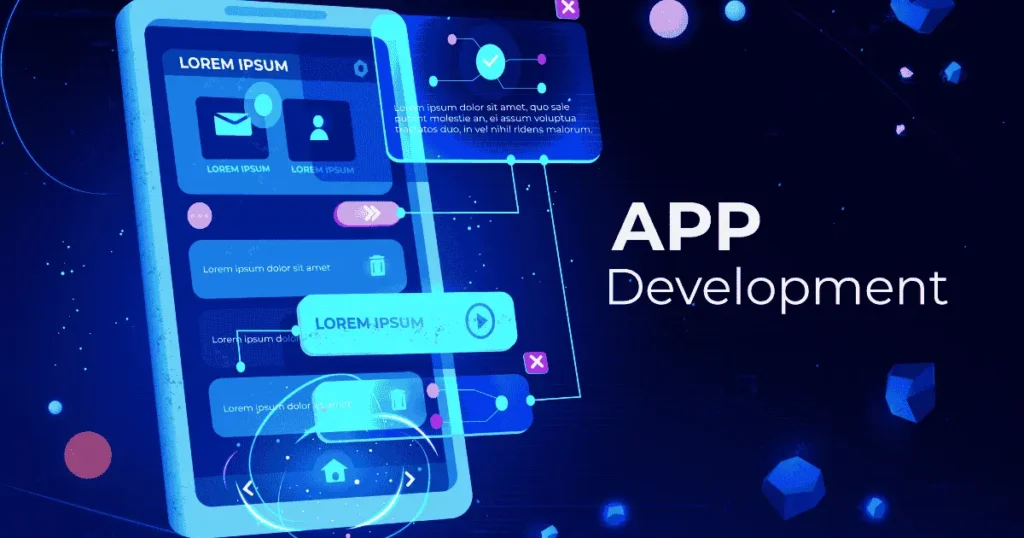Common Mistakes Indian Businesses Make When Building a Mobile App: A Complete Guide for Success
Introduction
Building a mobile app is no longer a luxury for Indian businesses—it’s a necessity. With over 750 million smartphone users in India and the mobile app market projected to reach $9.3 billion by 2025, the stakes have never been higher.
But here’s the shocking reality: Over 95% of mobile apps fail within the first year.
Why? Most failures aren’t due to bad ideas or lack of funding. They’re caused by 15 preventable mistakes that cost businesses thousands of dollars and months of development time.
Whether you’re a startup founder in Bangalore, a traditional business owner in Mumbai, or an entrepreneur looking to digitize your operations, this guide reveals the exact pitfalls that sink Indian apps—and more importantly, how to avoid them.
What You'll Learn in This Guide:
- Skipping Market Research: The Foundation Failure
- Ignoring Platform Guidelines: The Technical Trap
- Poor User Experience (UX) Design: The Engagement Killer
- Overloading with Features at Launch: The Complexity Curse
- Inadequate Budget Planning: The Financial Fiasco
- Neglecting App Store Optimization (ASO): The Visibility Void
- Insufficient Testing: The Quality Compromise
- Ignoring Data Privacy and Security: The Trust Breach
- Poor Marketing Strategy: The Launch Failure
- Neglecting Android Fragmentation: The Compatibility Crisis
- Inadequate Monetization Strategy: The Revenue Problem
- Ignoring Offline Functionality: The Connectivity Challenge
- Poor Customer Support: The Retention Killer
- Lack of Analytics and Data-Driven Decisions: The Insight Gap
- Not Planning for Scale: The Growth Bottleneck
1. Skipping Market Research: The Foundation Failure
❌ The Mistake:
Many Indian businesses jump straight into app development without understanding their target market, user behavior, or competitive landscape
Why It’s Costly: Without proper market research, you’re essentially building a solution for a problem that might not exist or creating an app that doesn’t resonate with your intended audience.
The Indian Context:
- Diverse market segments: What works in metropolitan cities like Delhi might not work in tier-2 cities like Indore
- Language preferences: Over 22 official languages and hundreds of dialects across different regions
- Economic disparities: Different purchasing power across urban and rural markets.
✅ How to Fix It:
- Conduct user interviews with at least 50 potential customers across different demographics
- Analyze competitor apps that are succeeding in the Indian market
- Use tools like Google Trends and App Annie to understand search patterns and app usage data
- Create detailed user personas specific to Indian market segments

2. Ignoring Platform Guidelines: The Technical Trap
❌ The Mistake: Developing apps that don’t follow iOS Human Interface Guidelines or Android Material Design principles
Why It Hurts: Apps that ignore platform guidelines face rejection from app stores, poor user reviews, and decreased user adoption.
Indian Business Impact: With Android holding 95% market share in India, many businesses focus solely on Android while ignoring iOS guidelines for their premium users2.
✅ Best Practices:
- Follow Android Material Design for consistency with user expectations
- Implement iOS Human Interface Guidelines if targeting premium segments
- Test apps on different screen sizes popular in India (budget phones to premium devices)
- Ensure consistent navigation patterns that Indian users are familiar with
3. Poor User Experience (UX) Design: The Engagement Killer
❌The Mistake: Creating cluttered interfaces, confusing navigation, or apps that don’t consider Indian user behavior patterns.
The Indian Challenges:
- First-time smartphone users: Many Indian users are still new to app interactions
- Data consciousness: Users are extremely mindful of data consumption
- Regional preferences: Different regions have varying design preferences and interaction patterns
✅ Critical UX Elements for Indian Apps:
- Simple, intuitive navigation that works for users with varying tech literacy
- Offline functionality for areas with poor internet connectivity
- Data-efficient design that minimizes bandwidth usage
- Regional language support with proper fonts and text rendering
- Clear call-to-action buttons that are easily identifiable
4. Overloading with Features at Launch: The Complexity Curse
❌The Mistake: Launching with too many features instead of focusing on core functionality
Why It Backfires: Feature-heavy apps are difficult to navigate, slow to load, and expensive to maintain. Users get overwhelmed and abandon apps with too many options.
✅The MVP Approach for Indian Market:
- Identify 3-5 core features that solve the primary user problem
- Launch with basic functionality that works flawlessly
- Gather user feedback before adding additional features
- Iterate based on actual usage data rather than assumptions

5. Inadequate Budget Planning: The Financial Fiasco
❌The Mistake: Underestimating the total cost of app development, maintenance, and marketing.
Hidden Costs Indian Businesses Miss:
- App store fees and compliance costs
- Ongoing maintenance and bug fixes (typically 15-20% of development cost annually)
- Marketing and user acquisition costs
- Server and hosting expenses as user base grows
- Regular updates to match new OS versions
Realistic Budget Breakdown:
- Development: 40-50% of total budget
- Marketing and user acquisition: 25-30%
- Maintenance and updates: 15-20%
- App store and compliance: 5-10%
6. Neglecting App Store Optimization (ASO): The Visibility Void
❌The Mistake: Launching apps without optimizing for app store search algorithms.
Indian ASO Considerations:
ASO Checklist for Indian Apps:
- Research Hindi and regional language keywords
- Create localized app descriptions for different states
- Use screenshots showing Indian users and contexts
- Optimize for trending Indian search terms
- Monitor and respond to user reviews in local languages
7. Insufficient Testing: The Quality Compromise
❌The Mistake: Launching apps without comprehensive testing across different devices, networks, and user scenarios
Indian Testing Requirements:
- Device fragmentation: Test on popular budget Android devices (Samsung Galaxy M series, Xiaomi Redmi, etc.)
- Network variations: Test on 2G, 3G, 4G, and WiFi connections
- Operating system versions: Many users don’t update to latest OS versions
- Regional usage patterns: Different usage behaviors across states and cities
- Localized keywords in Hindi, Tamil, Telugu, and other regional languages
- Cultural relevance in app descriptions and screenshots
- Regional competitor analysis for keyword opportunities
Essential Testing Checklist:
- Performance testing on devices with 2GB RAM or less
- Network connectivity testing with intermittent connections
- Battery optimization testing for extended usage periods
- Regional language testing for proper text rendering and input methods

8. Ignoring Data Privacy and Security: The Trust Breach
❌The Mistake: Not implementing proper security measures or being transparent about data collection practices
Indian Testing Requirements:
- Personal Data Protection Bill requirements
- RBI guidelines for fintech apps
- Industry-specific regulations (healthcare, education, finance)
- Growing user awareness about data privacy
Security Essentials:
- Implement end-to-end encryption for sensitive data
- Follow GDPR-like principles even before Indian law implementation
- Provide clear privacy policies in local languages
- Implement secure authentication methods (OTP, biometric)
- Regular security audits and vulnerability assessments
9. Poor Marketing Strategy: The Launch Failure
❌The Mistake: Believing “if you build it, they will come” without investing in user acquisition and marketing
Indian Marketing Channels:
- Social media marketing on platforms popular in India (WhatsApp, Instagram, YouTube)
- Influencer partnerships with regional content creators
- Digital advertising on Google, Facebook, and Indian platforms
- Offline marketing integration for traditional businesses
- Referral programs leveraging Indian social networks
Cost-Effective Marketing Strategies:
- Content marketing in regional languages
- Local partnerships with complementary businesses
- Community building through WhatsApp groups and Telegram channels
- App store featuring through ASO and editorial relationships
10. Neglecting Android Fragmentation: The Compatibility Crisis
❌The Mistake: Developing apps that work only on high-end devices while ignoring the majority of Indian users who use budget smartphones
Indian Device Landscape:
- Budget segment dominance: 70% of smartphones sold are under ₹15,000
- Varying RAM and storage: Many devices have 2-4GB RAM with limited storage
- Different screen sizes: From 5-inch budget phones to 6.5-inch premium devices
- Android version diversity: Many users still on Android 8-10
Optimization Strategies:
- Target Android API level 23+ to cover maximum devices
- Optimize for low RAM devices (2-3GB)
- Implement progressive loading for slower processors
- Test on popular budget devices like Redmi 9A, Samsung Galaxy M12
11. Inadequate Monetization Strategy: The Revenue Problem
❌The Mistake: Not having a clear, sustainable monetization model that works for the Indian market
Indian Market Monetization Challenges:
- Lower purchasing power: Willingness to pay for apps is limited
- Payment method preferences: UPI, wallets, and cash-on-delivery preferred over credit cards
- Price sensitivity: Users expect free or very low-cost solutions
- Ad tolerance: Users accept ads in exchange for free apps
Effective Monetization Models for India:
- Freemium with local pricing: Offer basic features free, charge for premium (₹29-₹99 monthly)
- In-app advertising: Partner with Indian ad networks for relevant ads
- Transaction fees: Small percentage on transactions (successful with fintech apps)
- Subscription bundles: Annual subscriptions with significant discounts

12. Ignoring Offline Functionality: The Connectivity Challenge
❌The Mistake: Building apps that require constant internet connectivity in a country where network coverage is still inconsistent
Indian Connectivity Reality:
- Intermittent 4G coverage in tier-2 and tier-3 cities
- Data consciousness: Users prefer apps that work with minimal data
- Network switching: Users frequently switch between WiFi and mobile data
- Rural connectivity: Limited or unstable internet in rural areas
Offline-First Design Principles:
- Cache critical content for offline access
- Sync data when connection is available
- Progressive loading that works on slow networks
- Offline-capable core features that don’t require internet
- Data usage indicators to help users manage consumption
13. Poor Customer Support: The Retention Killer
❌The Mistake: Not providing adequate customer support or support only in English
Indian Customer Expectations:
- Regional language support for queries and complaints
- Quick response times (within 24 hours expected)
- Multiple support channels (phone, WhatsApp, email, in-app chat)
- Human interaction preference over chatbots for complex issues
Customer Support Best Practices:
- Multilingual support team covering major Indian languages
- WhatsApp integration for customer queries
- In-app help section with FAQs in local languages
- Video tutorials for common app functions
- Community forums where users can help each other
14. Lack of Analytics and Data-Driven Decisions: The Insight Gap
❌The Mistake: Not implementing proper analytics to understand user behavior and app performance
Critical Metrics for Indian Apps:
- User retention rates: Daily, weekly, and monthly active users
- Geographic usage patterns: Which cities/states have highest engagement
- Language preferences: Which regional languages are most used
- Feature adoption: Which features are actually being used
- Revenue per user: Different across urban/rural segments
Analytics Implementation:
- Google Analytics for Mobile Apps for basic metrics
- Firebase Analytics for detailed user behavior
- Custom event tracking for business-specific actions
- Regional performance analysis to identify growth opportunities
- A/B testing for feature improvements
15. Not Planning for Scale: The Growth Bottleneck
❌The Mistake: Building apps that can’t handle increased user load or business growth
Scalability Considerations for Indian Market:
- Server infrastructure: Apps must handle traffic spikes during festivals
- Database optimization: Efficiently manage growing user data
- Content delivery networks: Fast loading across India’s geographic diversity
- Payment processing: Handle increased transaction volumes
- Customer support scaling: Growing support team with demand
Scalability Planning:
- Cloud infrastructure that auto-scales (AWS, Google Cloud, Microsoft Azure)
- Database sharding for user data management
- CDN implementation for faster content delivery
- Load testing to identify bottlenecks before they occur
- Microservices architecture for independent feature scaling
SEO-Optimized Success Framework for Indian Mobile Apps
Phase 1: Pre-Development (Weeks 1-4)
- Market research with 100+ user interviews
- Competitor analysis of top 10 apps in your category
- Technical architecture planning for scalability
- Budget allocation with 30% buffer for unexpected costs
Phase 2: Development (Weeks 5-16)
- MVP development focusing on 3-5 core features
- Continuous testing on popular Indian devices
- Security implementation from day one
- Performance optimization for low-end devices
Phase 3: Pre-Launch (Weeks 17-20)
- Comprehensive testing across devices and networks
- App store optimization with regional keywords
- Marketing material creation in local languages
- Customer support setup with multilingual capabilities
Phase 4: Launch and Growth (Week 21+)
- Soft launch in select cities for feedback
- Performance monitoring and quick bug fixes
- User feedback integration for improvements
- Scaling infrastructure based on user growth
Conclusion: Building Apps That Succeed in India
Success in the Indian mobile app market isn’t just about avoiding mistakes—it’s about understanding the unique challenges and opportunities that this diverse market presents. The businesses that succeed are those that respect the cultural diversity, economic realities, and technological constraints while building solutions that genuinely solve problems for Indian users.
Key Takeaways for Indian Businesses:
- Start with thorough market research tailored to Indian user behavior
- Build for the majority: Optimize for budget devices and slower networks
- Think local: Language, culture, and regional preferences matter enormously
- Plan for scale: Build infrastructure that can grow with your success
- Invest in marketing: Great apps need great marketing to succeed
By avoiding these 15 common mistakes and following the proven strategies outlined in this guide, your mobile app has a significantly higher chance of not just surviving but thriving in India’s competitive app ecosystem.
Remember, building a successful mobile app is a marathon, not a sprint. Focus on solving real problems, delivering exceptional user experiences, and continuously improving based on user feedback. The Indian market rewards businesses that show genuine commitment to serving users’ needs while respecting local preferences and constraints.
Ready to build your next mobile app? Avoid these mistakes, follow this framework, and you’ll be well on your way to joining the 5% of apps that achieve long-term success in the Indian market.
Looking for expert guidance on your mobile app development journey? Claritus Solutions specializes in building successful mobile apps for the Indian market. Contact us to discuss how we can help you avoid these common pitfalls and build an app that truly connects with your target audience.
Frequently Asked Questions About Mobile App Development
About the Author
Mohammed Fahad is the co-founder of Claritus Solutions, a digital agency helping Indian businesses scale online through custom websites, SEO, and Mobile solutions.
With hands-on experience in WordPress, UI/UX, and digital strategy, he writes to make tech simple and accessible — for people, not just search engines.


